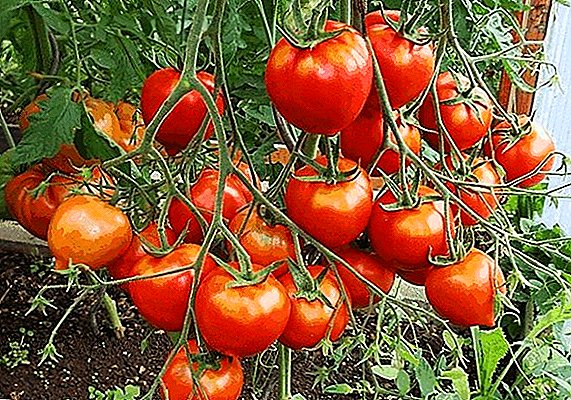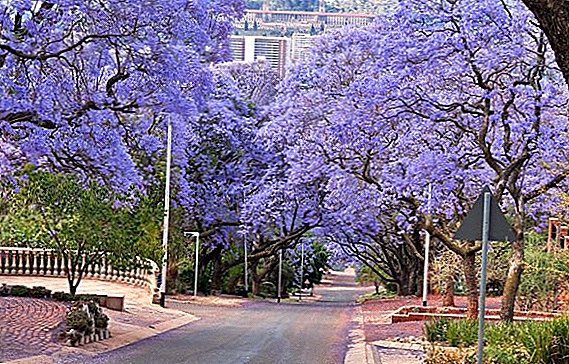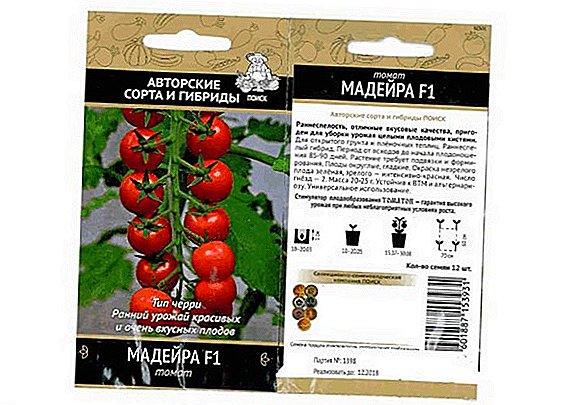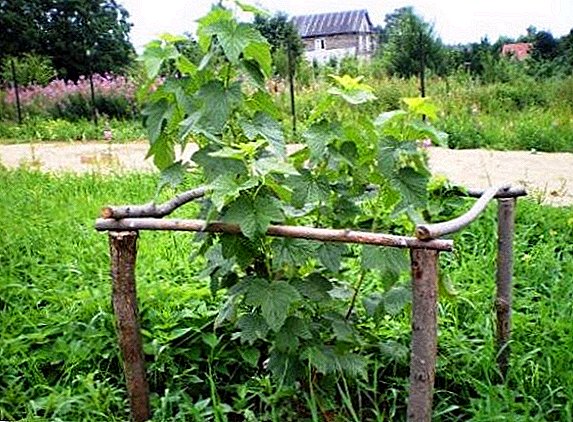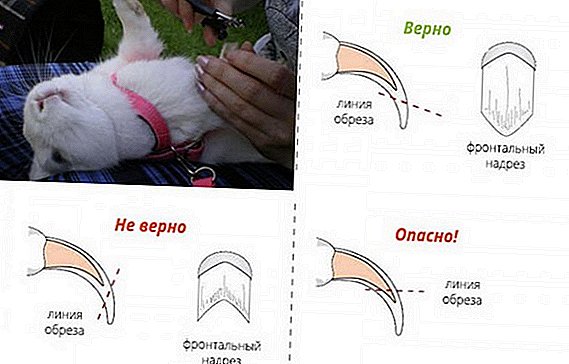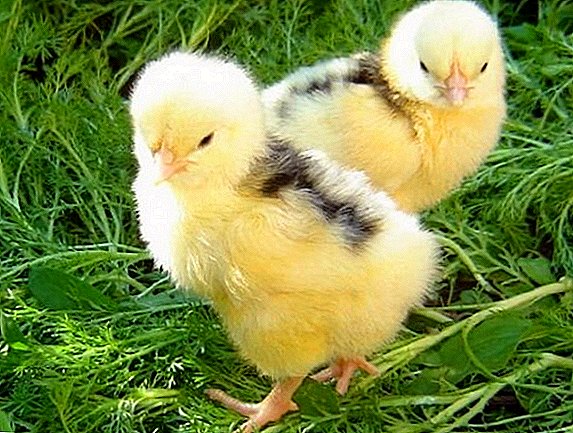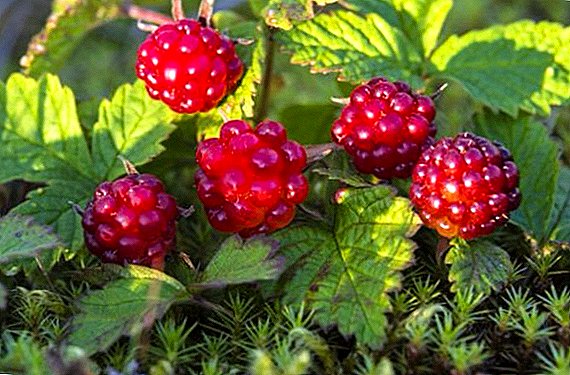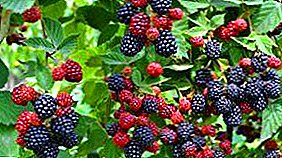
Blackberry - a relative of raspberry. Her berries are very tasty and fragrant.
Amateur gardeners have almost curbed the skill of garden growing blackberry bushes.
Blackberry breeding
For the reproduction of blackberries using a vegetative method and seeds. Seeds are buried 4-5 cm in open ground, better if they spend the winter in the ground.
Vegetative methods are more diverse. For example, a creeping blackberry can be propagated by planting apical branches, measles, green cuttings, root cuttings, by dividing the bush.
Upright varieties propagate well, only the apical cuttings do not survive.
Gardener note: Gooseberry, planting and care.
Raspberry, care after harvest //rusfermer.net/sad/yagodnyj-sad/posadka-yagod/aromatnaya-malina-vybor-sortov-i-osobennosti-vyrashhivaniya.html.
Read here all about planting pears.
Planting blackberries in the garden
 This plant loves to swim in the sun. In the sun, the harvest is richer, and the berries are sweeter. This is worth considering when choosing a landing site. It is better to plant in early spring so that the youngsters do not freeze over.
This plant loves to swim in the sun. In the sun, the harvest is richer, and the berries are sweeter. This is worth considering when choosing a landing site. It is better to plant in early spring so that the youngsters do not freeze over.
The size of the furrow depends on what you plant: for root cuttings, the width and depth are 8-10 cm and 5-8 cm, respectively; for green offspring 15-20 cm and 10-15, for woody offspring, the width and depth is 25-30 cm.
The bottom of the hole is laid with earth with humus or compost, we must also add potassium sulphide, superphosphate and a little more land without fertilizer on top. Roots are placed on top of this layer. Growth buds should sink no more than 3 cm into the ground. Fill with the mixture: soil, humus and mineral fertilizers.
Bush gradually watered. After landing, make a near-stem circle - a well that will hold water. Between the rows, a space of 1.8-2 meters is left.
Blackberry Bushes
Every year it is necessary to loosen the soil, as well as mulch it with humus.
Blackberry Trimming
 In the first year of life, the inflorescences should be trimmed so that all forces are spent on strengthening the roots. In the second year, the stems are cut to 1.5-1.8 meters to make it more convenient to harvest.
In the first year of life, the inflorescences should be trimmed so that all forces are spent on strengthening the roots. In the second year, the stems are cut to 1.5-1.8 meters to make it more convenient to harvest.
Frozen stems should be pruned to live buds. Young shoots cut out in May and June to thin out the bush.
Approximately in June it is necessary to trim the tops of young stock by 5-10 cm.
Garter stalks
In the second year after planting, the plant must be tied to a support. What designs for this to build decides the gardener himself, based on the variety of blackberries and fantasy. It is impossible to bend the shoots by force, so as not to break the bush.
In order for the plant to produce many side shoots, it is necessary to pin young shoots to the ground and pinch the tops. A year later, the old shoots cut out, and the young raise on support.
Proper pruning of cherries will help in the summer to get a good harvest.
Features of vine care //rusfermer.net/sad/vinogradnik/posadka-vinograda/formiruem-samostoyatel-no-vinogradnuyu-lozu.html.
Watering blackberry
Blackberries do not need an abundance of moisture. But still look after the soil moisture is worth it. Additional moisture is needed for the blackberry when the berries ripen.
Top dressing
Experienced gardeners recommend making 50 g of ammonium nitrate under the shrub every year. 6-8 kg of humus, 100 g of superphosphate and 30 g of potassium sulphate must be applied for 4 years of life.
Features of winter care
For the winter, blackberry branches should be bent down and covered with foil, roofing felt or other materials. In the spring, you need to remove the shelter and tie it to the pegs again.
Blackberry Utility
 Traditional medicine often uses blackberries to treat diseases of the urogenital system, diabetes, joint inflammation, skin diseases (ulcers, lichen, eczema), fever, pneumonia, and many other diseases. After all, blackberry has astringent, wound-healing, diaphoretic and anti-rotten effect.
Traditional medicine often uses blackberries to treat diseases of the urogenital system, diabetes, joint inflammation, skin diseases (ulcers, lichen, eczema), fever, pneumonia, and many other diseases. After all, blackberry has astringent, wound-healing, diaphoretic and anti-rotten effect.
For example, when gastritis and ulcers take broth: 10 g of leaves per 500 ml of boiling water.
When dysentery drink 3-4 tbsp. l This syrup: 500 g of sugar and 250 g of fruit, cook over low heat.
Stomatitis and sore throats are treated a little differently: 50 g of leaves in 1 liter of boiling water are drawn for 15-20 minutes, rinse your mouth 2 times a day.
Planting lupine at your summer cottage.
See photos of pyrethrum on our site //rusfermer.net/sad/tsvetochnyj-sad/vyrashhivanie-tsvetov/vyrashhivanie-piretruma-i-pravilnyj-uhod-za-etim-rasteniem.html.
When coughing, this will help: for 4 hours, insist in 1 cup boiling water 1 tbsp. l leaves (crushed), take 3-4 times 100 g before meals.
Diarrhea and diarrhea will stop this solution: boil the leaves for 20 minutes in water (proportions 1:10), take 1 tablespoon three times a day.
 To heal a wound or burn, you just need to attach crushed leaves to it.
To heal a wound or burn, you just need to attach crushed leaves to it.
Drink with blackberries and tea, it strengthens and soothes. To do this, dry the blackberry leaves in a glass container, then steam until blackened in a water bath and dry again. After that, you can brew like ordinary tea.
Planting blackberries in your garden, you will provide yourself with tasty and fragrant berries. And if you learn how to properly use the crop, then get rid of many unpleasant ailments.


 Gardener note: Gooseberry, planting and care.
Gardener note: Gooseberry, planting and care. Proper pruning of cherries will help in the summer to get a good harvest.
Proper pruning of cherries will help in the summer to get a good harvest. Planting lupine at your summer cottage.
Planting lupine at your summer cottage.